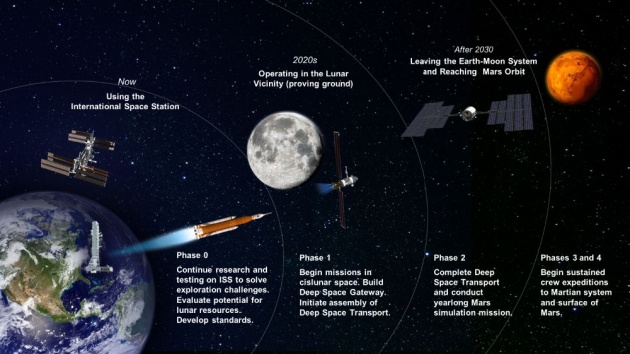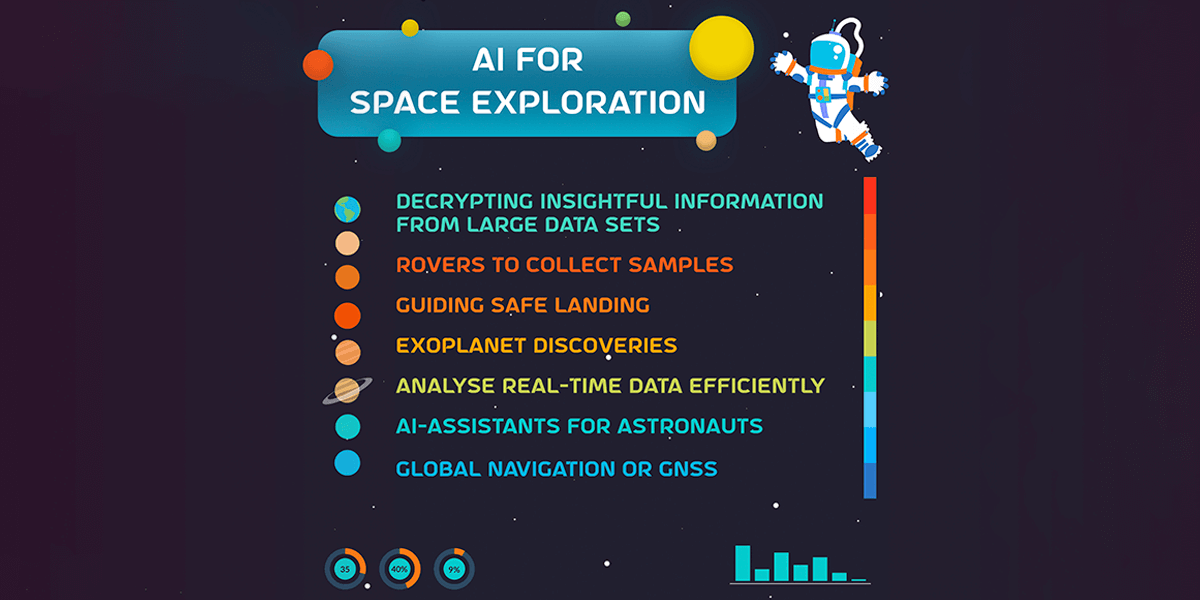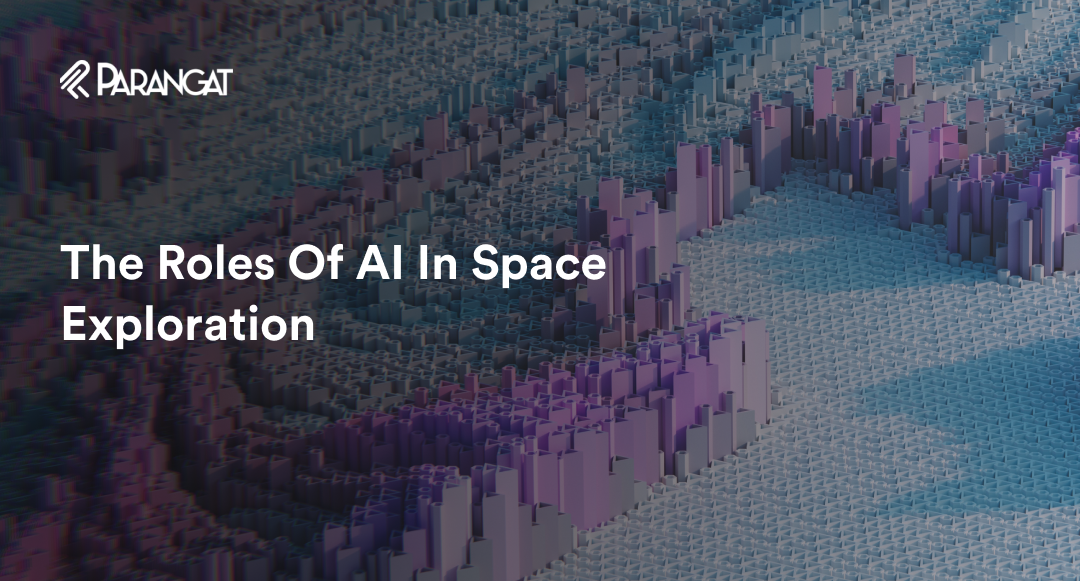Space exploration has always been a fascinating endeavor that pushes the boundaries of human knowledge and capabilities. In recent years, the integration of artificial intelligence (AI) has revolutionized the field of space exploration, enhancing mission efficiency, expanding scientific discoveries, and enabling autonomous exploration in the depths of the cosmos. AI has become an invaluable tool in understanding the universe and propelling our exploration of celestial bodies beyond Earth.
By harnessing the power of AI, space agencies and researchers have been able to tackle complex challenges, process vast amounts of data, and make real-time decisions in the distant and harsh environments of space. From autonomous exploration and mission planning to robotics and data analysis, AI has proven instrumental in overcoming the limitations of human capabilities and driving significant advancements in space exploration.
In this article, we will delve into the roles of AI in space exploration, exploring how AI enables autonomous systems, optimizes mission planning, assists in data analysis, aids in space weather forecasting, and contributes to various other crucial aspects of space exploration. We will also discuss the benefits and challenges associated with integrating AI into space exploration and highlight the methods through which AI is utilized in satellite operations, planetary geology, rocket landing, star and galaxy mapping, and predictive maintenance.
Let’s the roles of AI in shaping the future of space exploration.
Understanding Artificial Intelligence (AI)
Artificial Intelligence (AI) refers to the development and implementation of computer systems that can perform tasks that typically require human intelligence. It involves the simulation of human-like intelligence in machines, enabling them to learn, reason, analyze data, recognize patterns, make decisions, and interact with the environment or humans. AI encompasses various techniques and technologies, including machine learning, natural language processing, computer vision, robotics, and expert systems.

At its core, AI aims to replicate and automate human cognitive abilities, allowing machines to process and understand complex information, adapt to new situations, and perform tasks efficiently and accurately. Using algorithms and mathematical models, AI systems can analyze large datasets, recognize patterns, and extract valuable insights that drive decision-making and problem-solving.
AI is categorized into two main types: Narrow AI and General AI. Narrow AI, also known as Weak AI, is designed to perform specific tasks within defined domains, such as image recognition, speech processing, or recommendation systems. On the other hand, General AI, also called Strong AI, aims to possess the same intelligence and capabilities as a human being, exhibiting the ability to understand, learn, and perform any intellectual task.
In the context of space exploration, AI plays a vital role in augmenting human capabilities, enabling autonomous systems, analyzing vast amounts of space data, and making informed decisions. By leveraging AI, space missions can be more efficient, data analysis can be accelerated, and exploration of distant and inhospitable environments can be conducted with greater precision and safety.
Learn: AI vs Human Intelligence: What Is the Difference?
Role of AI in Space Exploration
AI plays a crucial role in revolutionizing space exploration, enhancing mission capabilities, and expanding our understanding of the cosmos. Let’s delve into the critical roles of AI in space exploration:
Autonomous Exploration
AI is crucial in enabling autonomous systems for space exploration. Autonomous spacecraft and probes can make real-time decisions based on AI algorithms, allowing them to navigate, conduct scientific experiments, and adapt to unforeseen circumstances without constant human intervention. For example, NASA’s Mars rovers, such as Curiosity and Perseverance, utilize AI to autonomously navigate the Martian surface, avoid obstacles, and analyze rock samples.
Mission Planning
AI assists in optimizing mission planning for space exploration. By analyzing various parameters such as available resources, power constraints, communication windows, and scientific goals, AI algorithms can generate efficient schedules and plans for spacecraft operations. This ensures optimal utilization of limited resources and maximizes scientific output. For instance, AI-based mission planning was employed during NASA’s Cassini mission to Saturn, allowing the spacecraft to study multiple targets and collect valuable data efficiently.
Robotics and Rovers
AI empowers robotic systems, such as rovers and robotics arms, used in space exploration. AI algorithms enable these systems to navigate challenging terrains, recognize and avoid obstacles, and precisely perform complex tasks. The Mars rovers, Spirit, Opportunity, and Perseverance, utilize AI to analyze images, select scientific targets, and autonomously traverse the Martian landscape.

Data Analysis
AI is critical in analyzing vast amounts of space data collected from telescopes, satellites, and planetary missions. AI algorithms can identify patterns, anomalies, and scientific discoveries within the data. For example, the Kepler space telescope used AI algorithms to identify exoplanets by analyzing changes in brightness observed from distant stars.
Space Weather Forecasting
AI aids in predicting and monitoring space weather events for mission safety. By analyzing historical and real-time data, AI algorithms can identify patterns and forecast space weather phenomena such as solar flares, radiation levels, and geomagnetic storms. This information protects spacecraft, satellites, and astronauts from harmful space weather conditions.
Natural Language Processing (NLP)
NLP enables effective communication and understanding between humans and AI systems in space exploration. AI-powered systems can process and interpret human language, allowing astronauts to interact with AI assistants or ground control. For instance, the CIMON (Crew Interactive Mobile Companion) aboard the International Space Station utilizes NLP to understand and respond to astronauts’ commands and provide assistance.
Exoplanet Discovery
AI contributes to the discovery and characterization of exoplanets. AI algorithms analyze vast amounts of data from space telescopes, identifying subtle changes in starlight that indicate the presence of exoplanets. The AI-driven Transiting Exoplanet Survey Satellite (TESS) has already significantly contributed to the catalog of known exoplanets.
Space Traffic Management
As the number of satellites and spacecraft in space increases, AI assists in managing space traffic. AI algorithms can track and predict the trajectories of objects in space, helping to prevent collisions and ensure safe and efficient operations. Space agencies and organizations use AI-based tools to monitor and manage the ever-growing space debris population.
Related: 9 Artificial Intelligence Statistics: All You Need to Know
Benefits of Artificial Intelligence for Space Exploration
Artificial Intelligence (AI) has revolutionized the field of space exploration, offering numerous benefits that enhance mission capabilities and scientific discoveries. Here are some key benefits of AI in space exploration:
Efficient Data Analysis
AI algorithms can analyze vast amounts of space data quickly and accurately, uncovering valuable insights and patterns that may be challenging for humans to identify. This enables scientists and researchers to make discoveries more efficiently and accelerate the pace of exploration.
Autonomous Exploration
AI enables the development of autonomous systems that can perform tasks independently, reducing the need for constant human intervention. These systems can navigate, collect data, and make real-time decisions, allowing for more efficient and adaptive exploration of celestial bodies.
Precise Mission Planning
AI assists in mission planning by optimizing resource allocation, scheduling, and route planning. AI algorithms consider various factors such as power consumption, communication constraints, and mission objectives to generate optimal plans, resulting in better resource utilization and mission success rates.

Risk Mitigation
AI can help mitigate risks associated with space exploration by analyzing data and identifying potential hazards. By detecting anomalies and predicting failures, AI algorithms contribute to the safety and reliability of spacecraft and equipment, reducing the likelihood of mission disruptions.
Enhanced Space Weather Forecasting
AI algorithms are crucial in analyzing space weather data and predicting events like solar flares or geomagnetic storms. Accurate space weather forecasting helps protect satellites, spacecraft, and astronauts from potential disruptions and ensures mission safety.
Intelligent Robotics
AI-powered robotics and rovers can perform intricate tasks, explore challenging terrains, and collect scientific data in environments that are difficult for humans to access. These intelligent robotic systems extend the reach of space exploration and enable scientists to gather valuable information from distant or hazardous locations.
Scientific Discovery
AI assists in identifying patterns, classifying celestial objects, and detecting subtle signals that may indicate scientific discoveries. By analyzing vast datasets, AI algorithms contribute to identifying exoplanets, understanding cosmic phenomena, and advancing our knowledge about the universe.
Earth Applications and Technological Spin-offs
The technologies developed for AI in space exploration often have applications on Earth. AI algorithms, data processing techniques, and autonomous systems developed for space missions find practical use in healthcare, transportation, environmental monitoring, and disaster response, benefiting society.
Challenges of Integrating Artificial Intelligence into Space Exploration
While integrating Artificial Intelligence (AI) brings immense space exploration potential, several challenges must be addressed. Here are some key challenges of integrating AI into space exploration:
Limited Computing Resources
Spacecraft and satellites have limited computing resources due to weight, power, and size constraints. Implementing AI algorithms on these resource-constrained systems can be challenging. Efficient algorithms and hardware optimization techniques are necessary to ensure that AI systems operate effectively within these limitations.
Communication Delays
Space missions often face delays due to the vast distances between spacecraft and Earth. Real-time decision-making by AI systems becomes challenging when there is a significant lag in transmitting data and receiving commands. AI algorithms should be designed to handle such delays and make autonomous decisions without relying heavily on constant human guidance.
Uncertainty and Unknown Environments
Space exploration involves venturing into unknown and unpredictable environments. AI systems need to adapt and operate in environments with limited prior information and uncertainty. AI algorithms should be robust enough to handle unexpected situations, adapt to changing conditions, and make decisions based on incomplete or noisy data.
Reliability and Safety
Reliability and safety are critical considerations in space exploration. AI systems must be designed to operate reliably in harsh and extreme conditions, where failure can have serious consequences. Ensuring the robustness and reliability of AI algorithms is crucial to maintain the integrity of space missions and protect valuable assets.
Ethical and Legal Considerations
AI systems in space exploration raise ethical and legal concerns. For instance, the decision-making autonomy of AI systems should be aligned with ethical guidelines, ensuring they do not cause harm or violate legal regulations. Ethical considerations also extend to data privacy, fairness, and transparency in AI systems deployed in space missions.
Human-AI Collaboration
Collaboration between humans and AI systems is essential in space exploration. Ensuring seamless interaction and cooperation between astronauts, operators, and AI systems can be challenging. The design of user interfaces and communication protocols should support intuitive human-AI collaboration and facilitate the transfer of expertise and decision-making authority.
System Resilience
Space missions face various risks, including radiation, extreme temperatures, and mechanical failures. AI systems must be resilient to such adversities and capable of operating in degraded or fault-prone conditions. Implementing fault-tolerant algorithms and redundancy mechanisms is vital to ensure the reliability and longevity of AI systems in space.
Methods of AI Used in Space Exploration
AI plays a significant role in space exploration, employing different methods to enhance mission capabilities and scientific discoveries. Here are some critical techniques of AI used in space exploration:
Satellite Operations
AI is utilized in satellite operations to improve efficiency and optimize performance. AI algorithms monitor telemetry data, predict anomalies, and automate routine tasks such as antenna pointing, power management, and orbit adjustments. By autonomously managing satellite operations, AI systems free up human operators for more complex decision-making tasks and enable continuous monitoring of spacecraft health.
Planetary Geology (Astrogeology)
AI aids in analyzing and understanding planetary geology. By analyzing images and data collected by rovers, landers, and orbiters, AI algorithms can identify geological features, classify rock compositions, and provide insights into the history and formation of planetary surfaces. These AI methods contribute to unraveling the mysteries of celestial bodies and help scientists make informed decisions about sample collection and exploration routes.
Rocket Landing
AI is crucial in rocket landing operations, particularly for reusable rockets. AI algorithms process real-time data from sensors, cameras, and navigation systems to guide rockets during descent and landing. AI systems can make split-second adjustments by analyzing and interpreting these inputs to ensure precise and safe landings. For example, SpaceX’s Falcon 9 rocket’s autonomous landing capability utilizes AI to achieve vertical landings.
Star and Galaxy Mapping
AI techniques are employed to map stars and galaxies, aiding in studying the cosmos. AI algorithms analyze astronomical data collected by telescopes to detect and classify celestial objects, identify patterns, and discover new celestial phenomena. This mapping contributes to understanding the universe’s structure, evolution, and distribution of stars and galaxies.
Predictive Maintenance
AI is utilized for predictive maintenance in space missions. By continuously monitoring sensor data from spacecraft and equipment, AI algorithms can detect anomalies and predict potential failures or performance degradation. This enables proactive maintenance and minimizes the risk of critical failures during space exploration missions.
AI Empowers the Future of Space Exploration
As we embark on the incredible journey of space exploration, Artificial Intelligence (AI) emerges as a game-changer, propelling us to new frontiers and expanding our understanding of the universe. With AI as our ally, we unlock the power to navigate the cosmos, unravel divine mysteries, and push the boundaries of human knowledge.
AI revolutionizes space missions by enabling autonomous systems to make real-time decisions. Imagine spacecraft and rovers exploring distant planets, analyzing data, and adapting to ever-changing environments without constant human intervention. AI’s ability to optimize mission planning ensures efficient resource utilization and maximizes scientific output, guiding us to unprecedented discoveries.
Data analysis becomes a breeze with AI algorithms. They sift through vast amounts of space data, uncovering hidden patterns and insights that drive scientific breakthroughs. From studying planetary geology to mapping stars and galaxies, AI empowers researchers to make sense of the vast cosmic tapestry, opening doors to new realms of understanding.
However, integrating AI into space exploration presents unique challenges. Limited computing resources, communication delays, uncertainties in unknown environments, and ensuring system reliability demand our utmost attention. Ethical considerations and fostering seamless human-AI collaboration are vital to harnessing AI’s full potential while maintaining safety and ethical standards.
With each challenge conquered, AI propels us forward, enhancing mission efficiency, expanding scientific frontiers, and inspiring technological advancements. As AI and space exploration intertwine, we enter an era where humans and intelligent machines work hand-in-hand, shaping our cosmic destiny.
In this age of discovery, AI becomes our guide, helping us navigate the cosmos and uncover the wonders that lie beyond. With AI as our ally, we step into a future where space exploration transforms our understanding of the universe and enriches our collective journey among the stars.

With roll up sleeves, dive in and get the job done approach, it was in the year 2010 when Sahil started Parangat Technologies. Emphasizing a healthy work culture and technology-driven company, he has successfully created a workplace where people love to work and live. He is a software engineer and a passionate blockchain enthusiast.


 +44-7511-112566
+44-7511-112566 +353-1-8079571
+353-1-8079571 +1-415-799-9792
+1-415-799-9792

